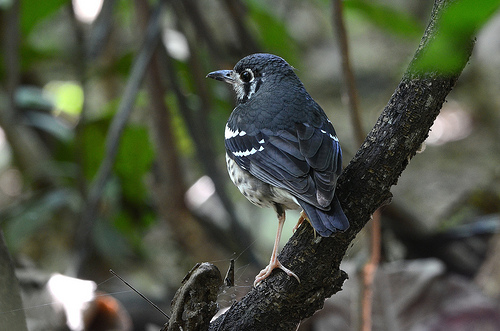
Philippines Custom Birding Tours
Aside from our set departure tours, we are also offering customized tours throughout the Philippines for individuals and groups (maximum of 6 people) for a minimum of 1 day to a maximum of 30 days or more. You can create your own tour and choose the birding sites you would like to visit, from the more easy destinations from our Main Tours to our more remote destinations. Some of these are the more demanding birding sites in the Philippines and often involves more hiking and staying in tented camps. We offer fully organized tours with private transportation. Birding in the Philippines in smaller groups gives you the best chances to see the rarest and most endangered endemics as well as the best photographic opportunities. Please contact Birdguiding Philippines for availability, prices, and best itineraries for the birding sites you would like to visit on your tour. Birdguiding Philippines offers beyond any doubt the widest coverage in birding destinations within the Philippines.
Destinations
Luzon
- La Mesa Eco Park
- Angono Cave
- Candaba Marsh
- Mount Makiling
- Infanta Road
- Subic Bay
- Tanay Epic park
- Mount Polis
- Mount Data
- Camp Sawa
- Aurora
- Tadao Forest
- Mount Isarog
- Calayan Island
- Baggao
- Adams
Mindanao
- Mount Kitanglad
- P.I.C.O.P
- Mount Dulang-Dulang
- Camiguin Sur Island
- Eden resort
- Zamboanga
Palawan
- Subteranean River National Park
- Balsahan Trail
- Irawan Eco Park
- Zig Zag Road
- Napsan Road
- Mount Mantalingajan
- Mount Victoria
Visayas
- Mount Canlaon (North Negros)
- Mount Mantiquil(South Negros)
- Lake Balinsasayao(South Negros)
- Mount Madja-as(Panay)
- Sibaliw(Panay)
- Tabunan Forest(Cebu)
- Rajah Sikatuna(Bohol)
- Samar Island Natural Park
- Tablas Island(Romblon)
Mindoro
- Sablayan Penal Farm
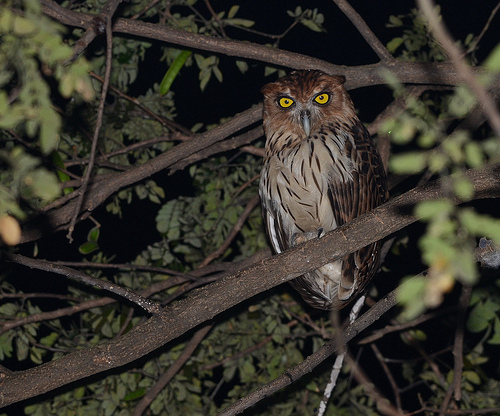
Philippine Eagle-Owl
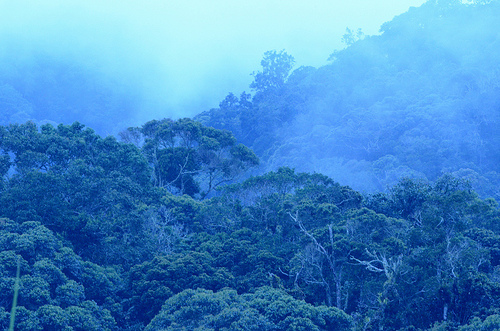
Seeing the rarest and least known birds of the Philippines
Luzon
Hamut Camp orCamp Sawa: The Best of the Sierra Madre Mountains
Trekking into the Sierra Madre Mountains and birding the largest forests of the Philippines is a unique experience. This area is one of the most highly recommended places to visit on a Remote Philippines custom tour. Even though the hunting pressure on birds is very high, Hamut Camp holds many species that are very hard to find elsewhere. A long trek will bring us to our campsite where we will stay overnight to move on the next day to reach our final destination at Hamut Camp. Five days will be spent in the vicinity to search for some of the most unique and highly threatened Philippine endemics in the heart of the Sierra Madre Mountains: Flame-breasted Fruit-Dove, Cream-bellied Fruit-Dove and Luzon Bleeding-heart are distinct possibilities, and we stand a good chance to encounter Philippine Hawk-Cuckoo and Rufous Coucal, whereas Philippine Scops-Owl and Luzon Hawk-Owl will be the main prizes of our nocturnal forays. Spotted Wood-Kingfisher is quite common around the camps. Whiskered Pitta will be our main target species and we will make a major effort to see this real gem. Sierra Madre Crow is among the other possibilities. We will look out for the Grand Rhabdornis that can often be found perched on the top of dead trees. Rusty-faced Babbler (Rabor’s Wren-babbler) and Golden-crowned Babbler, Luzon Striped-Babbler, Ashy-breasted Flycatcher and Blue-breasted Flycatcher are among the many rare birds that the splendid forest around Hamut Camp holds.
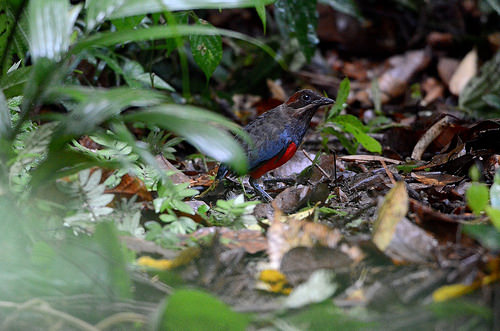
Whiskered Pitta
Tadao forest and Village

Black-chinned Fruit-Dove
This excellent forest in the northwest of the island of Luzon is a birders paradise and the non-hunting policy of the villagers of Tadao makes this a pleasant adventure. During our stay in Tadao Village, we will explore the many trails and excellent tracks through the forest. We should add Yellow-breasted Fruit-Dove, Black-chinned Fruit-Dove and the beautiful Luzon Bleeding-heart to our trip list. Guaiabero is very common and often seen at the nest. Scaly-feathered Malkoha, Philippine Scops-Owl and Luzon Hawk-Owl are rather common and with some luck we might even spot them in the daytime. The huge Philippine Eagle-Owl is heard most nights but is very elusive but we will give it our best shot during long hours of night birding. Spotted Wood-Kingfisher, Hooded Pitta and Blackish Cuckoo-shrike are commonly observed. White-browed Shama and Mangrove Blue Flycatcher are among the many birds that can be found around Tadao Village. This is a rarely visited area so further exploration might yield some avian surprises. Recently Japanese Yellow Bunting was recorded here. Surely the birdlist will grow with every visit.
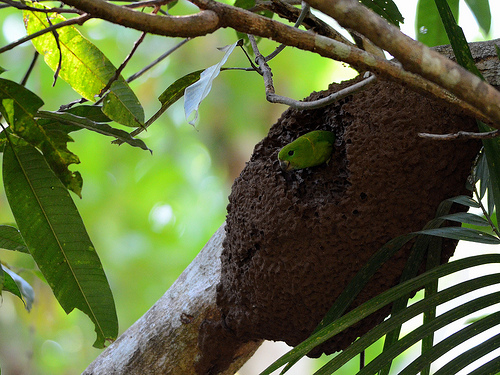
Guaiabero
Mount Data: the Central Mountains of Luzon nice and easy
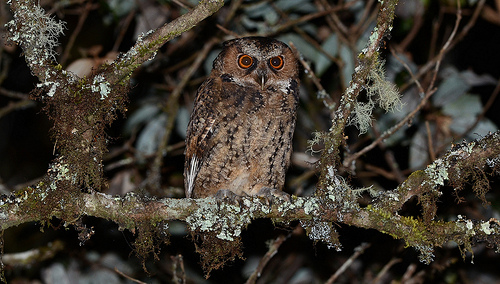
Philippines Scops-Owl
We stay at the quiet Mount Data Hotel, which offers a unique chance to explore the remaining patch of well-preserved montane forest just above the hotel. This is a good spot to search for some cracking nightbirds like Luzon Scops-Owl, Philippine Scops-Owl and Philippine Frogmouth. Some easy daytime birding should result in Chestnut-faced Babbler, Mountain Leaf-warbler, Luzon Bush-Warbler, Long-tailed Ground-Warbler, Mountain Shrike and Metallic-winged Sunbird. We will also scan the skies for the little known Whitehead’s Swiftlet that has been recorded here.
Mount Isarog and the mountains of South Luzon
This marvellous forested mountain in the south of Luzon is home to many of the montane specialities of this island. Our main target will be the Grey-banded Babbler, a recent split from the unbelievable Rabor’s Wren-babbler. This mega skulker is very hard to spot in the dense undergrowth and is mostly found in the lower part of the mountains in secondary forest. It is tough to find anywhere else as there is very little forest left in the south of Luzon. On Mount Isarog it still survives as some good patches of forest remain intact. Camping is needed at the base of the mountain to explore the forest above.
Mindanao
Zamboanga: the Mindanao birding experience.
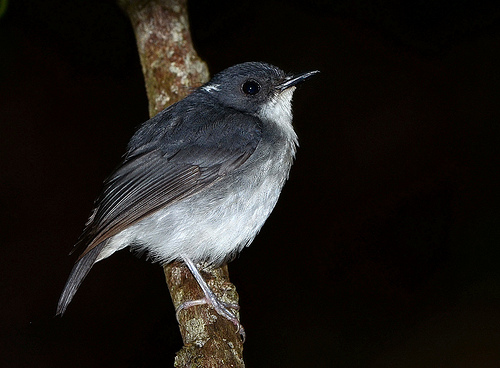
Little Slaty Flycatcher
The Pasonanca Watershed Reserve is one of the richest birding areas in the whole country. It holds many of the lowland species of Mindanao that are now hard to find elsewhere. We will visit several areas within the watershed reserve and stand a good chance to find the stunning Southern Silvery Kingfisher, Hombron's Kingfisher and Philippine Dwarf Kingfisher. Rufous Hornbill, Mindanao Hornbill, Writhed Hornbill and Mindanao Wattled Broadbill are likely to be seen. Little Slaty Flycatcher, Mindanao Blue Fantail, Rufous Paradise Flycatcher, Philippine Oriole, Philippine Leafbird, Rufous-tailed Jungle Flycatcher and the Zamboanga Bulbul (a localized endemic) are decidedly common. The pretty White-eared Tailorbird and the Streaked Ground Babbler are other goodies we should encounter and if we are lucky we might come across a Mindanao Bleeding-heart or a Short-crested Monarch. Owling may result in good views of Everett's Scops-Owl, Mindanao Hawk-Owl, Chocolate Boobook, Giant Scops-Owl and Philippine Frogmouth. This is a huge area of forest and 5 to 7 days are needed to cover 3 different areas within the watershed reserve. We will mostly be walking along forest trails. This is a must for every birder visiting the Philippines and there for we are offering Zamboanga on our Remote Tour.
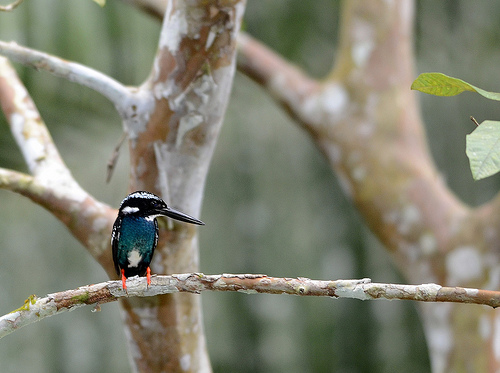
Southern Silvery Kingfisher
Sitio Siete: the mystic mountains of South Mindanao

The beautiful forest view from the village of Sitio Sitie
We will base ourselves at the nice and beautiful Lake Sebu, from where we shall explore the mountains above the small village of Sitio Sitie. This area holds many of the Mindanao montane specialties. The very rare Cryptic Flycatcher and the splendid Mindanao Miniature Tit-Babbler are the stars amongst the endemics we will be looking for over the next days. The song of the White-browed Shortwing differs greatly between the lower and the higher altitudes, which also makes this a very interesting place to visit. Amethyst Brown-Dove, Hombron's Kingfisher, Rufous Hornbill, White-eared Tailorbird, Bagobo Babbler, Mindanao Pygmy Babbler and Stripe-breasted Rhabdornis are among the many species that this extensive Mountain range holds.

Amethyst Brown-Dove
Mount Apo: the highest mountain of the Philippines
Not far from the city of Davao rises Mount Apo with its densely forested slopes. This is yet another sublime spot to track down some of the rarest montane species that Mindanao holds. Whiskered Flowerpecker is one of the highlights. Mindanao Lorikeet - another very difficult endemic – is possible higher up in the forest. Along with many other montane forest birds this is the place to find Mindanao Racquet-tail, Mindanao Scops-Owl and Mountain Shrike. The rarely seen Goodfellow’s Jungle-Flycatcher could be a nice bonus. We will try to lure out a Bagobo Babbler, the most difficult of all the Philippine skulkers. Mount Apo Sunbird, White-cheeked Bullfinch and Mountain Serin will make our wishlist complete.
Bol-ogan: the little visited backside of Mount Kitanglad Mt. Dulang Dulang
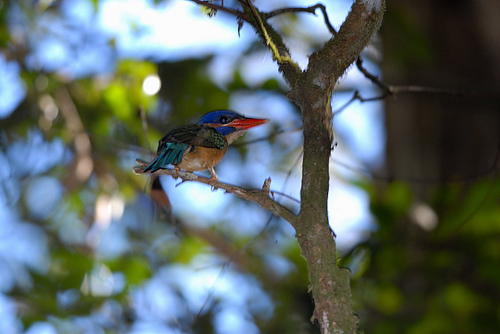
Hombron's Wood-Kingfisher
This is an excellent montane forest area which holds many of the species that can be found in the higher reaches of Mount Kitanglad. This is one of the best spots to search for the rarely seen and little known Goodfellow’s Jungle-Flycatcher. This one of the best spots in Mindanao to search for montane species. Three nights of camping is needed to make the best of our visit. Mindanao Montane Racquet-tail, Hombron's Wood-Kingfisher, Spot-throated Flameback, McGregor’s Cuckoo-shrike, Long-tailed Ground-Warbler, Mountain Shrike, Apo Myna, Apo Sunbird, Black-masked White-eye and White-cheeked Bullfinch are regularly observed. Night birding offers excellent opportunities to locate Mindanao Scops-Owl, Everett's Scops-Owl and the elusive Giant Scops-Owl near our camp area.
Palawan
Mount Mantalingajan: in search of Palawan’s only montane endemic

Palawan Striped-babbler
In the south of Palawan, near the small town of Brooke’s Point rises the Mount Mantalingajan massif which is home to the Palawan Striped-babbler, the only montane endemic of this island. This very little known and only rarely seen endemic can only be found on a few mountains in southern Palawan. Our expedition to find this mysterious bird starts in the town of Brooke’s Point. A short drive will take us to a small village from where we shall start the long hike accompanied by our local porters to reach the forest edge at 1000m altitude. Here we will pitch camp and explore the higher forest to look for mystifying Palawan Striped-Babbler. A real adventure for a rarely seen bird!
Rasa Island: the last Philippine Cockatoo stronghold
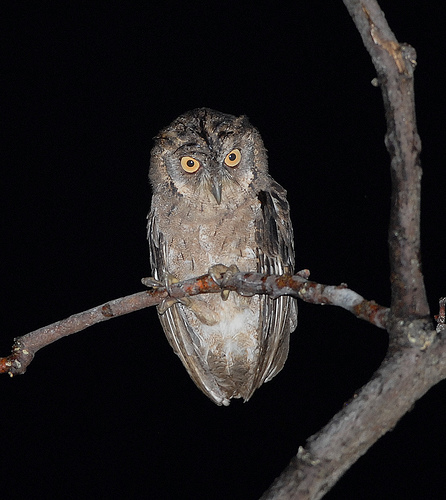
Mantanani Scops-Owl
This small island can be reached from the town of Narra and is home to the critically endangered Philippine Cockatoo, which is still quite common here. Rasa is also home to the cute Mantanani Scops-Owl.
Mindoro
Sablayan Penal Farm: the last remaining lowland Forest of Mindoro

Mindoro Hornbill
We will base ourselves in the Sablayan Penal Farm for two days to explore the forest in search of Mindoro lowland endemics together with a good selection of other species that are hard to find elsewhere. These include Pink-bellied Imperial-Pigeon, Mindoro Racquet-tail, Black-hooded Coucal, Philippine Coucal (Mindoro Coucal), Mindoro Hornbill, Black-bibbed Cuckoo-Shrike, Mindoro Bulbul and Scarlet-collared Flowerpecker. At dawn we have the best chances to find Mindoro Hawk-Owl. The critically endangered Mindoro Bleeding-heart possibly still survives in the forests of Siburan.
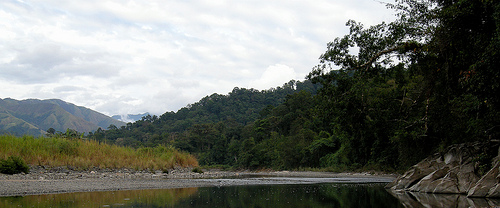
River next to the Siburan Forest
Panay
Mount Madja-as: in search of the endemic Panay Striped-Babbler
A long uphill hike will take us to the edge of the forest of Mount Madja-as, where we will camp. From here we will go in search of the unfamiliar Panay Striped-Babbler that occurs in the nearby forest, usually in mixed flocks. Two days should be enough to complete this mission. We will also search for the Negros Scops-Owl: a rarely seen and elusive endemic.
Sibaliw: the Visayan birding experience
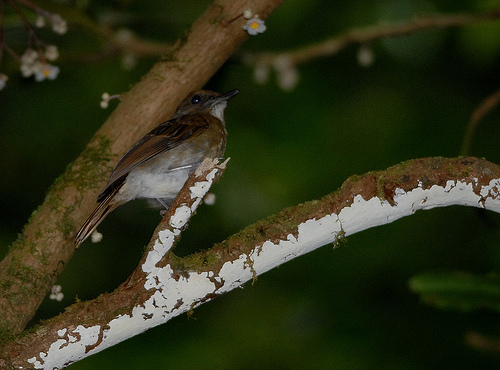
White-throated Jungle-Flycatcher
Sibaliw is a must for any adventurous birder visiting the Philippines. Staying at the research station in the middle of the amazing forest at Sibaliw is an unforgettable experience, even though it takes a five hours long and difficult walk to reach the station. Birding can be rewarding as the very rare Negros Bleeding-heart still has a good population here. White-throated Jungle-Flycatcher is often seen along the many trails and dry river beds, where we shall concentrate our birding efforts. We have excellent opportunities to get to grips with Visayan Hornbill, the amazing-looking Yellow-faced Flameback, White-winged Cuckoo-shrike, Visayan Rhabdornis and Visayan Shama. We will need to spend three nights at the research station.

Visayan Rhabdornis
Walden’s Hornbill: in search of the most endangered
Yet another critically endangered bird is Walden’s Hornbill, which is also called Visayan Wrinkled, Writhe-billed or Rufous-headed Hornbill. It is endemic to Panay and Negros, but it probably does not survive on the latter island. The total population is very small. During this trek we stand a fair chance to see one of the rarest birds in the World at its nesting trees. A very rewarding experience!
Negros
Mount Canlaon: the Flame-templed Babbler Quest
We will stay at the small resort of Mabukal from where we will explore the remnant forest on the slopes of Mount Canlaon. We will search for the beautiful Flame-templed Babbler along with many other species like Spotted Wood-Kingfisher, Visayan Tarictic Hornbill, White-vented Whistler, White-winged Cuckoo-shrike, Lemon-throated Warbler and Maroon-naped Sunbird. This offers a perfect opportunity to see some of the Visayan specialities without trekking.
Mt Talinis or Mt Mantiquil: in search of Negros Striped-Babbler
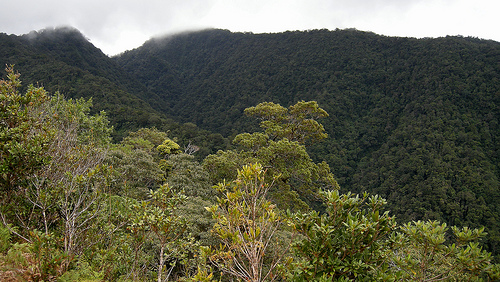
Mt.Mantiquil
These are the only sites in the South of Negros where we can find Negros Striped-Babbler. We will stay in Dumaguete town from where we shall explore Mt Talinis or Mt Mantiquil for one full day in search of the babbler.
Cebu
Tabunan Forest: seeing some of the most endangered species
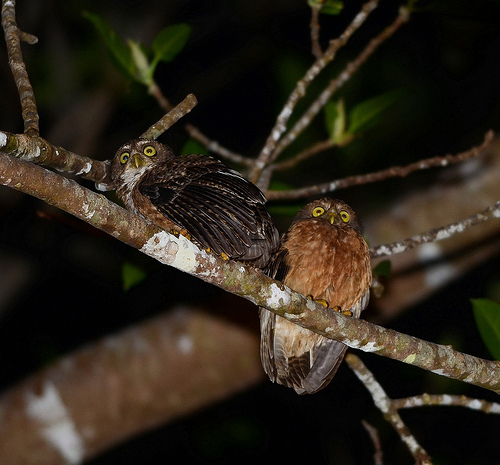
Cebu Hawk-Owls
The last patches of forest on Cebu hold one of the most endangered birds of the Philippines the Cebu Flowerpecker. Nowadays it has become very hard to find, but this little gem still survives in the forest above the village of Tabunan. With the help of our local guide we shall explore these forest patches, but we will need the best of luck to add this critically endangered species to our list. We will also look for Black Shama, another very rare and localized species, which gives its presence away by its beautiful song. Cebu Bulbul, Visayan Balicassiao, Mangrove Blue Flycatcher (sure a future split) are other possibilities. Before we drive back to Cebu City, where we shall stay overnight, we shall look for Cebu Hawk-Owl. With its different call compared to the Hawk-Owl on Tablas this is now a new species. Tabunan Forest offers delightful birding and one full day should be enough. We visit Tabunan forest on our Remote Tour.
Bohol
Rajah Sikatuna National Park
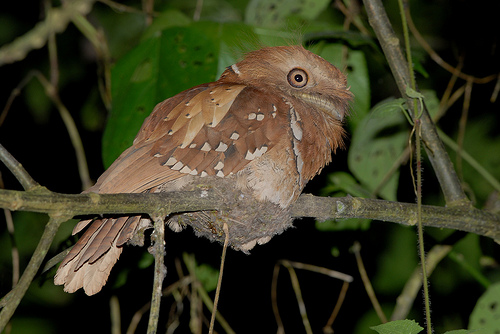
Philippine Frogmouth
Rajah Sikatuna Park near the famous Chocolate Hills offers many trails that gives us the opportunity to enter the forest and search for a very nice selection of forest birds like Philippine Trogon, Winchell's Kingfisher and Samar Hornbill. This is also the best spot to encounter the most extraordinary Azure-breasted (or Steere’s) Pitta, the exceedingly-beautiful Visayan Wattled Broadbill, Philippine Fairy-bluebird and Yellow-breasted Tailorbird (another Visayan specialty). Streaked-ground Babbler is a must here as is Black-crowned Babbler. At night we will look for Everett's Scops-Owl, Luzon Hawk-Owl and Philippine Frogmouth. We will need two full days to explore this wonderful Park.
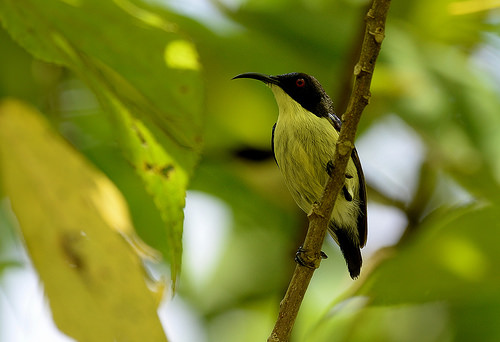
Bohol Sunbird
Tablas
The little know small island endemics
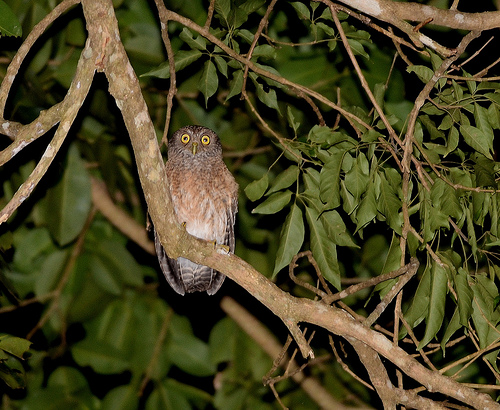
Romblon Hawk-Owl
Staying in the small, quiet town of St. Agustin, we shall explore the forest at the Dubduban Watershed. This last remaining forest on the island holds some very localized endemics: Tablas Drongo, Tablas Bulbul (Steak-breasted Bulbul), Romblon Hawk-Owl, Tablas Fantail, Variable Dwarf Kingfisher, Winchell's kingfisher, Rufous Paradise-Flycatcher and Mangrove Blue Flycatcher. Mantanani Scops-Owl can be found around the town in coconut plantations. Tablas is an interesting place to visit, just a short trip away from Panay and close to Borocay, the most popular vacation island in the Philippines.
Camiguin Sur Island
The perfect holiday and birdwatching destination

Camiguin Hawk-Owl
This small volcanic island near Mindanao is a nice, peaceful holiday island with famous beach resorts where we shall base ourselves to cover several sites around the island in search of the island endemics. Camiguin Hanging-Parrot was described in 2006 and is quite different compared to the Colasisi (Philippine Hanging-Parrot) from the other islands. Another interesting species to look for is the Yellowish Bulbul. With a song differing strongly from the birds on Mindanao, this surely will be a future split: the Camiguin Sur Bulbul. Some other goodies to look for are the Variable Kingfisher and Mangrove Blue Flycatcher, also a possible future split. At night we will search for the Camiguin Hawk-Owl. Camiguin Island is a pleasant destination with scenic views, lovely beaches, good food, friendly people and great birds.
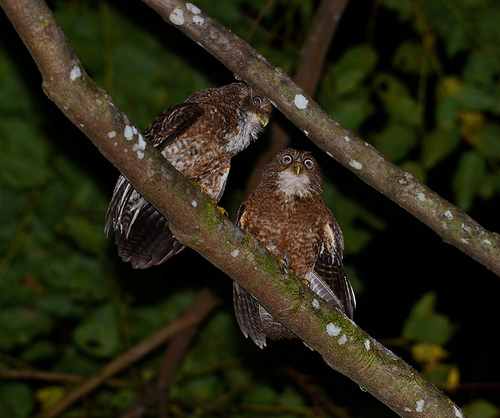
Camiguin Hawk-Owls
Calayan Island, Babuyan Island Group
In search of the Calayan Rail
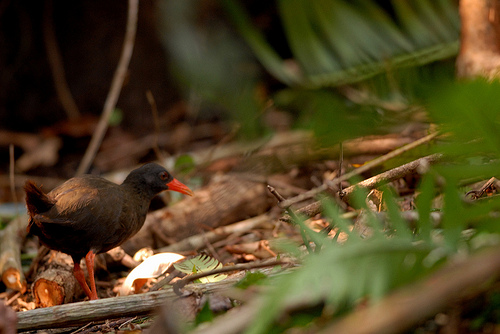
Calayan Rail
Calayan Island is probably one of the most remote and difficult islands to reach in the Philippines. It is situated in the north of Luzon. The best time to visit the island would be March and April, when the sea is ‘calm’ and boats are available to reach the island, about 80 km out of the coast. With its discovery in 2004, the Calayan Rail makes this an exciting destination for the very adventurous birder. So far not many people have reached Calayan to search for the rail. A few other interesting species occur on the Island. Elegant Scops-Owl is most probably a different species which might be named the Calayan Scops-Owl. Northern Boobook is among the many other interesting possibilities on the island together with Whistling Green-Pigeon and Chestnut-eared Bulbul which together with the Batanes Islands is the only place in the Philippines where this bird can be seen.The distinctive Yellow-bellied Whistler. Visiting Calayan would take some extra time.
Back to our: Home Page.
